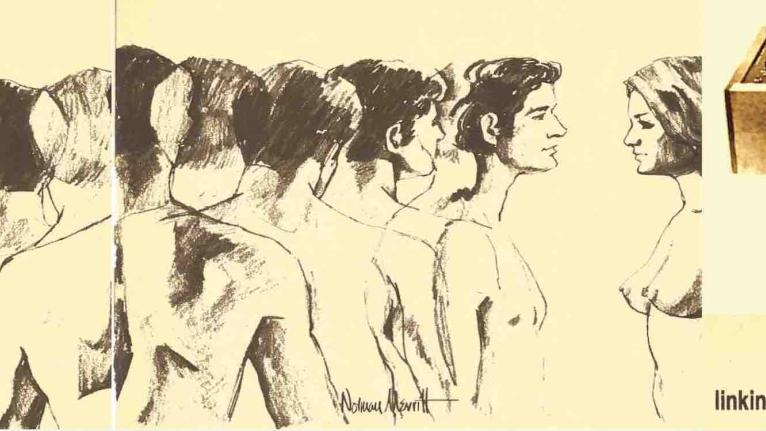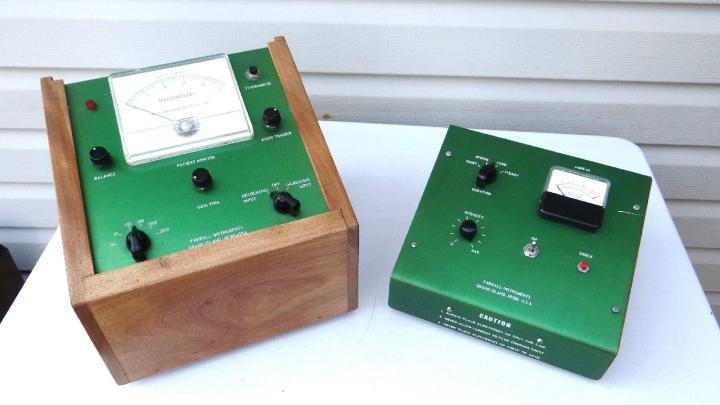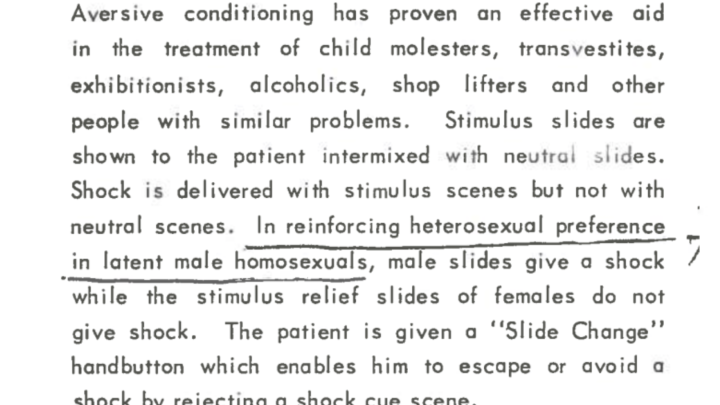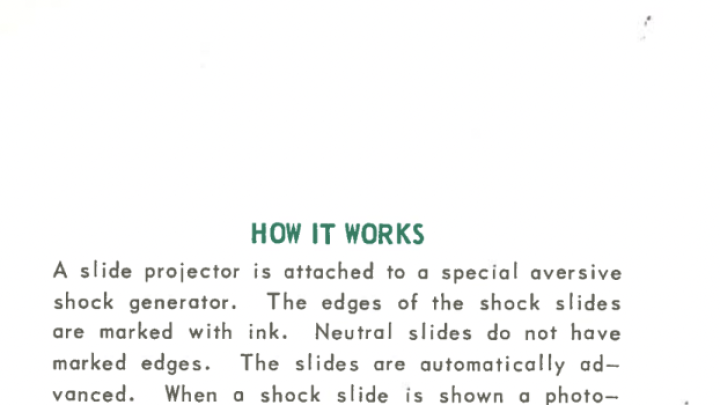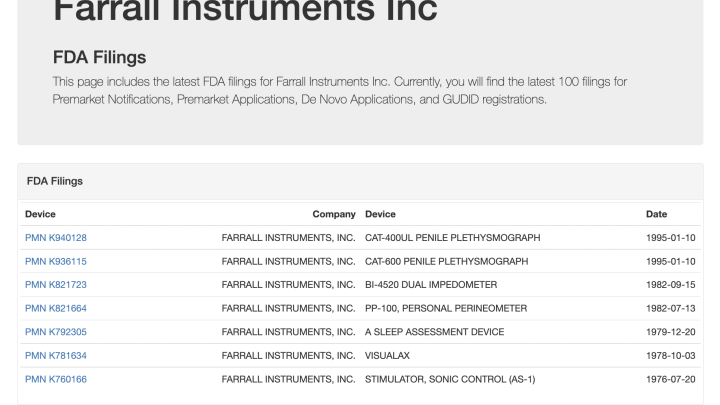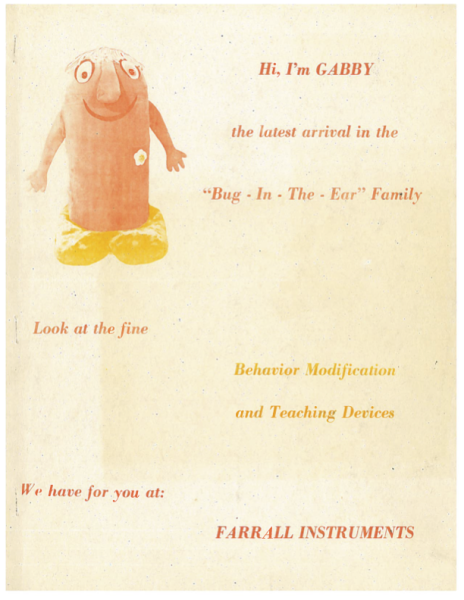
Scanned cover page of the Farrall Instruments Behavior Modification and Teaching Devices catalog. There is a photo of Orange and text on white background. There is a photo of an orange and yellow plush device, with a creepily smiling face and a flower broach. Text reads, “Hi, I’m GABBY the latest arrival in the “Bug-In-The-Ear” Family / Look at the fine Behavior Modification and Teaching Devices / We have for you at: Farrall Instruments”

Scanned blank page.
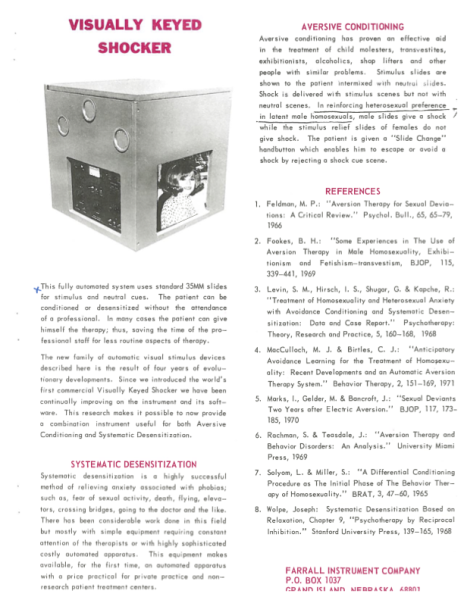
Product introduction page for the Visually Keyed Shocker. Pink headings and black text.
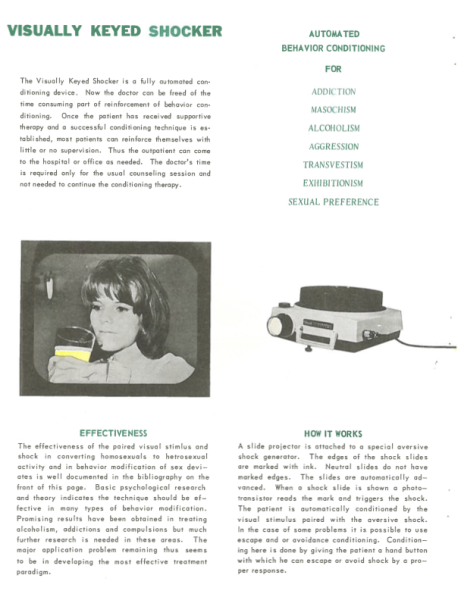
Continuation of Product introduction page for the Visually Keyed Shocker. Green headings and black text. Includes a black and white photo of a young woman with a bob haircut drinking a cup of yellow liquid, there is a black border around here, giving the impression of a TV screen. Photo of a projector.
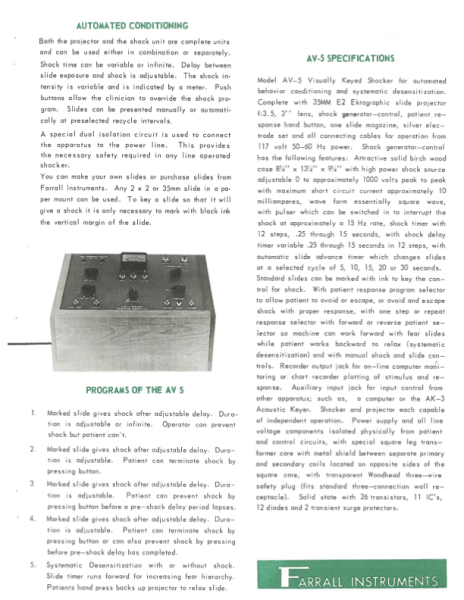
Continuation of product introduction page for the Visually Keyed Shocker. Green headings and black text. Photo of the AV 5 Visually Keyed Shocker, earlier displayed in this article. Continuation of product introduction page for the Visually Keyed Shocker. Pink headings and black text.
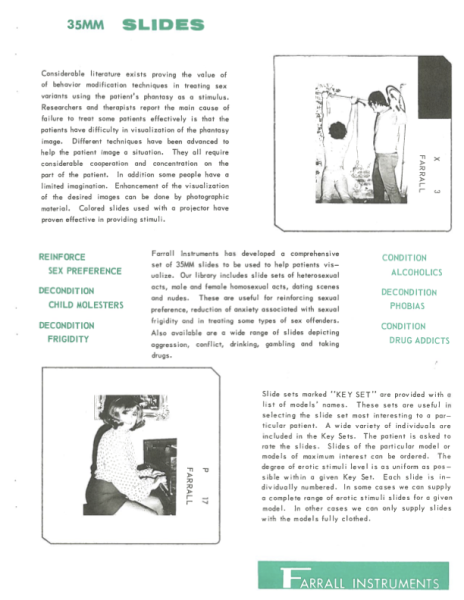
Product introduction page for the Visually Keyed Shocker. Photo of the AV-6 Visually Keyed Shocker, earlier displayed in this article. Green headings and black text.
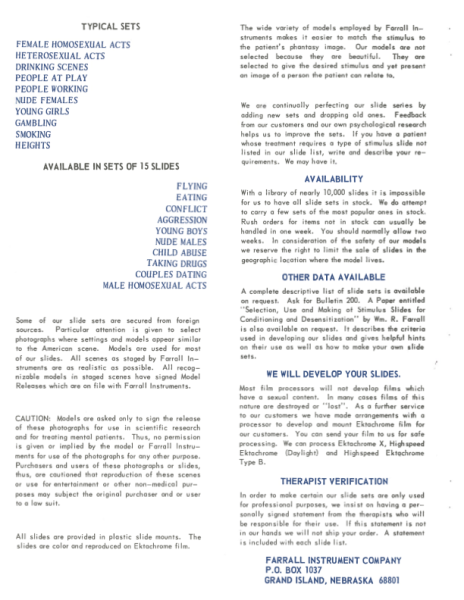
Continuation of product introduction page for the Visually Keyed Shocker. Pink headings and black text. Continuation of product introduction page for the Visually Keyed Shocker. Blue headings and black text.
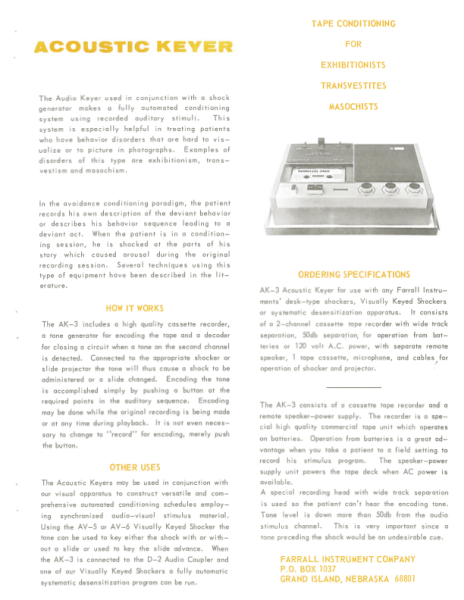
Product introduction page for the Acoustic Keyer. Photograph of a tape player for tape conditioning. Yellow headings and black text.
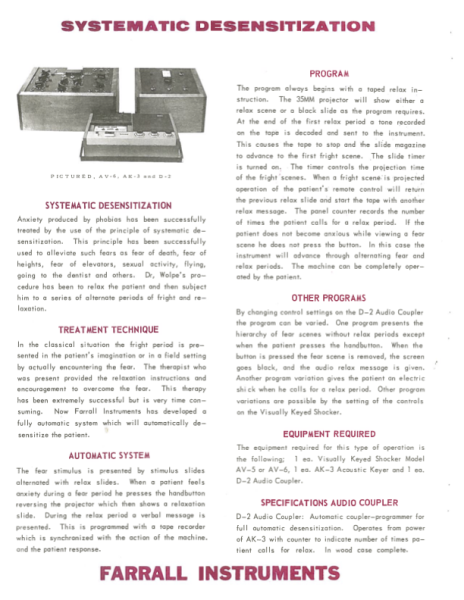
Continuation of product introduction page for the Systematic Desensitization. Photo of the AV-6, AK-3, and D-2 shockers. Pink headings and black text.
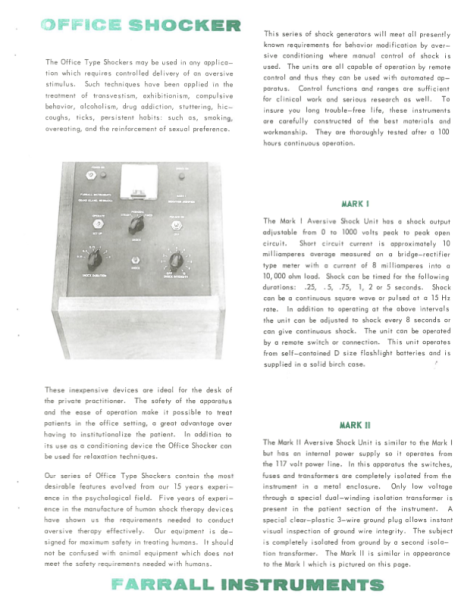
10Continuation of Product introduction page for the Office Shocker. Green headings and black text. Photo of the office shocker.
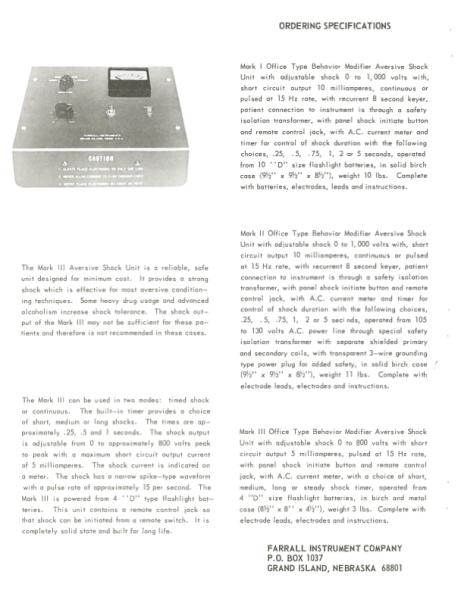
Continuation of Product introduction page for the Office Shocker. Black headings and black text. Photo of the office shocker.
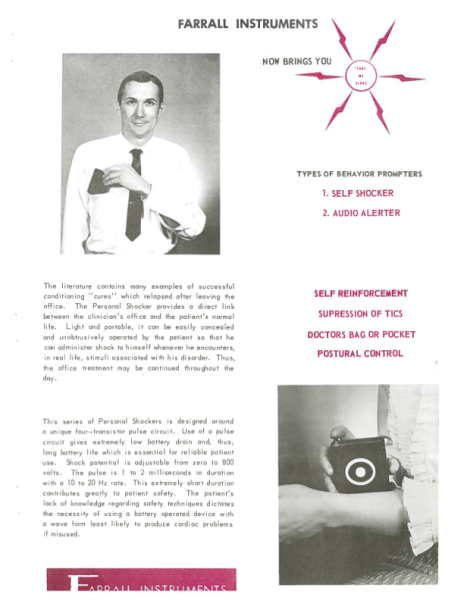
Continuation of Product introduction page for the Office Shocker. Pink headings and black text. Photo of a man in a white collared shirt and black tie reaching into his pocket for the self shocker. Photo of an arm and a hand pressing a shock button.
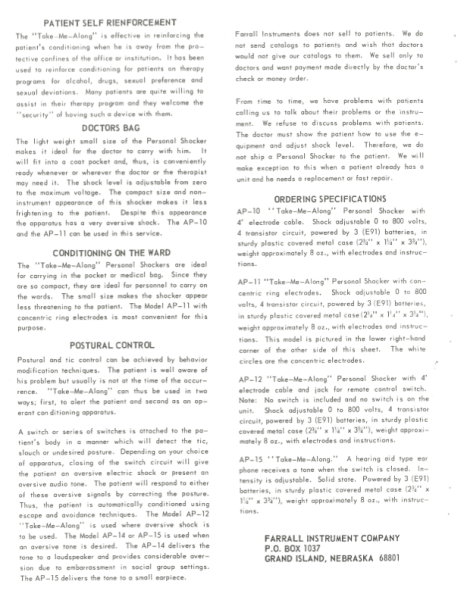
Continuation of Product introduction page for the Office Shocker. Black headings and black text.
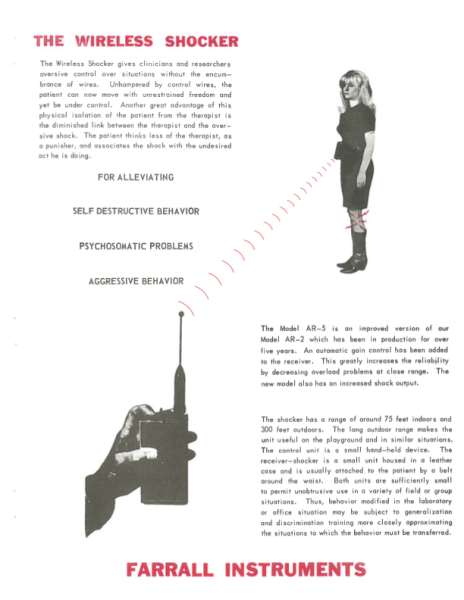
Continuation of Product introduction page for The Wireless Shocker. Pink headings and black text. Photo of a hand held shocker with pink rays extending toward a woman and pink shock waves surrounding her knee.
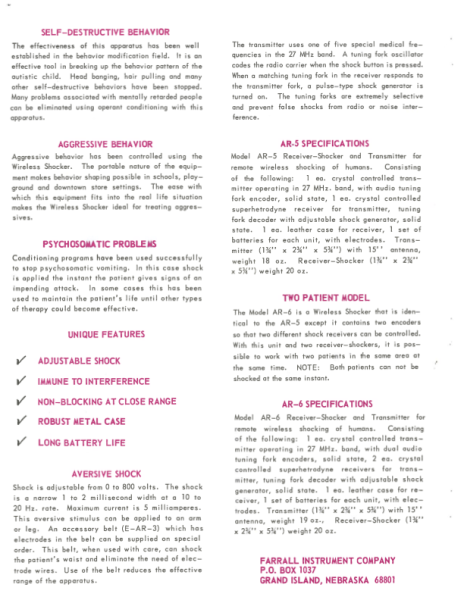
Product introduction page for the Visually Keyed Shocker. Photo of the AV-6 Visually Keyed Shocker, earlier displayed in this article. Green headings and black text.
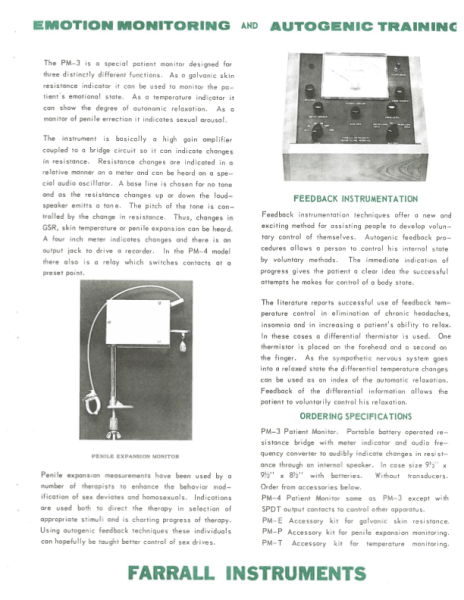
Product introduction page for the Emotion Monitoring and Autogenic Training. Green headings and black text. Photo of a visually keyed shocker and a penile expansion monitor.
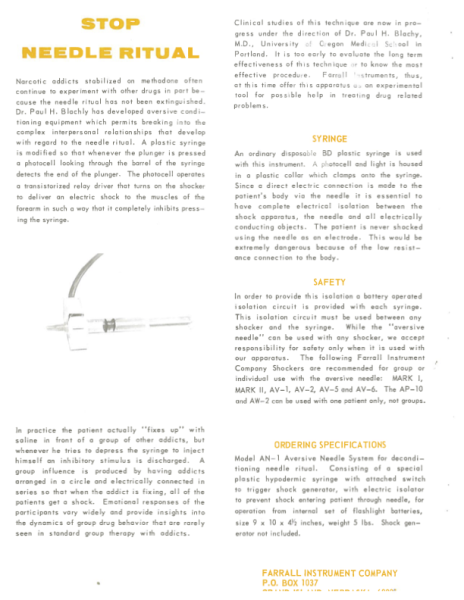
Product introduction page for the Stop Needle Ritual. Yellow headings and black text.and black text. Photo of a tube attached to a longer needle and syringe.
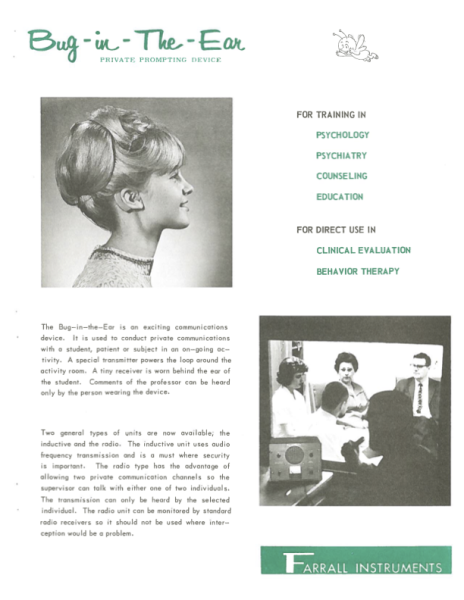
Product introduction page for the Bug-in-the-Ear. Green headings and black text. Photo of a blonde woman’s profile; she has an elaborate hairstyle and an earpiece. Photo of several people separated by a window from a technician who has a shocker.
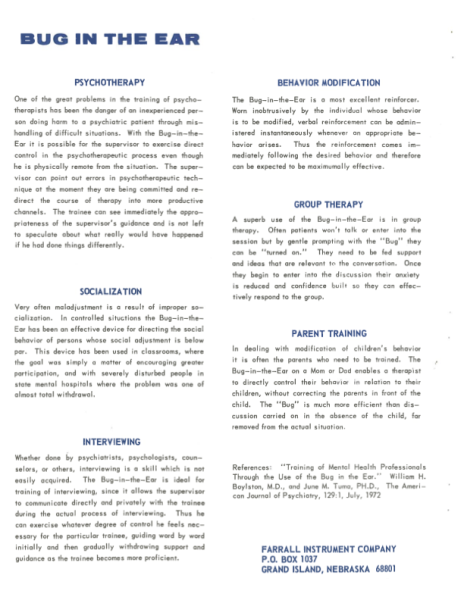
Continuation of Product introduction page for the Bug-in-the-Ear. Blue headings and black text.
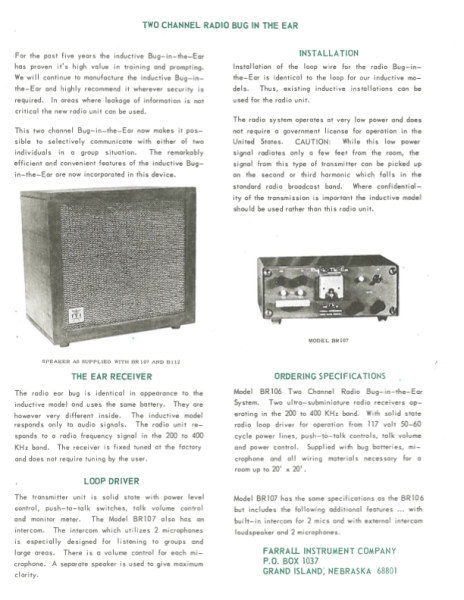
Continuation of Product introduction page for the Bug-in-the-Ear. Green headings and black text. Photo of a speaker and a model of a Bug-in-the-Ear radio.
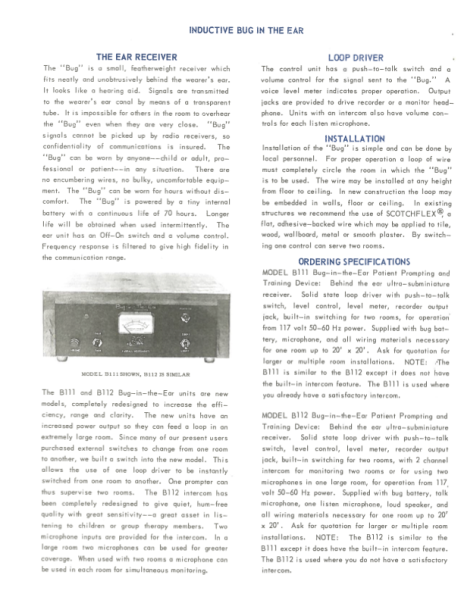
Continuation of Product introduction page for the Bug-in-the-Ear. Blue headings and black text.
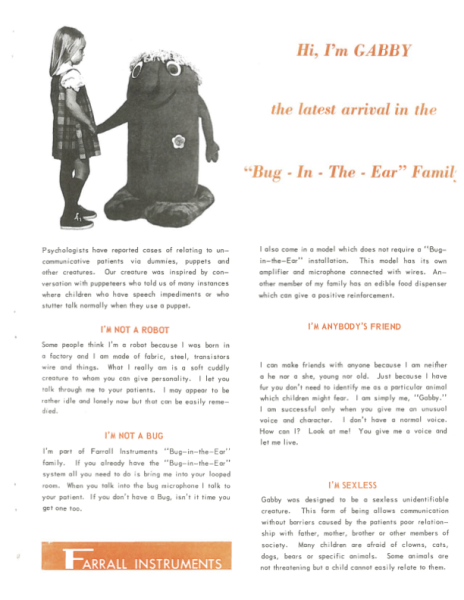
Product introduction page for GABBY, the latest in the “Bug-in-the-Ear” Family. here is a photo of an orange and yellow plush device, with a creepily smiling face and a flower broach. It is holding the hand of a small blonde child in a plaid dress and black sneakers.
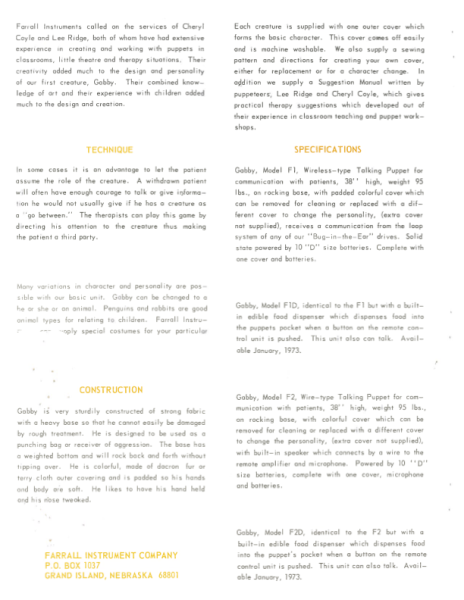
Continuation of product introduction page for GABBY. Yellow headings and black text.
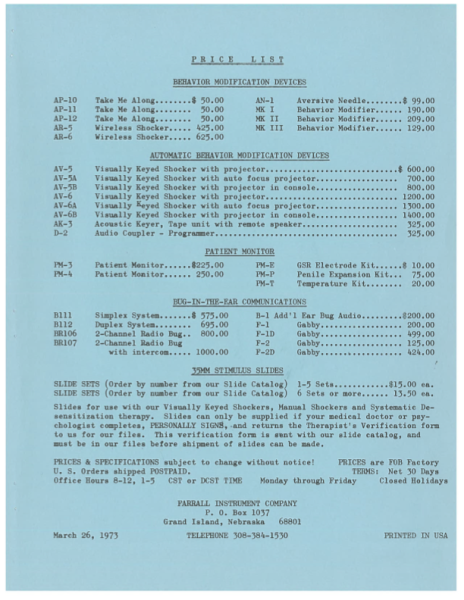
Price list page of all devices. Black text on blue paper. Includes Take Me Along, Wireless Shocker, Aversive Needle, Behavior Modifier, Visually Keyed Shocker components, Patient Monitor, GSR Electrode Kit, Penis Expansion Kit, Temperature Kit, Simplex System, Duplex System, 2-Channel Radio Bug, Gabby, and Slide Sets.

26

Blank white page.
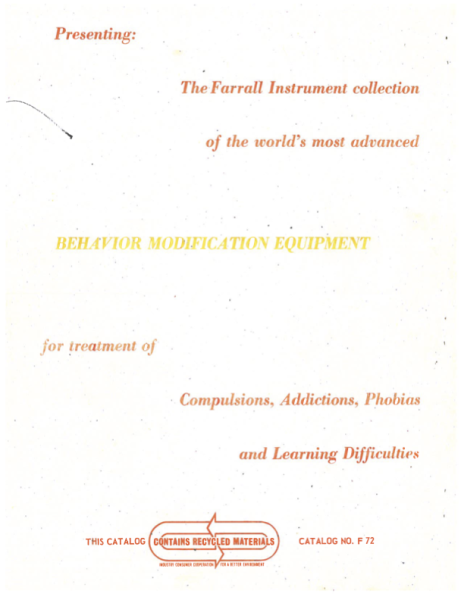
Catalog ending page. Yellow and Orange text on white background. Text reads Presenting: The Farrall Instruments collection of the world’s most advanced Behavior Modification Equipment for treatment of Compulsions, Addictions, Phobias and Learning Difficulties.
